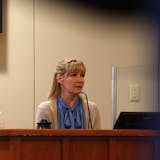Clinic staff members at Neighborhood HealthSource in Minneapolis were studying patient data not long ago when a number jumped out at them: One of their patients had visited the emergency room 73 times in the previous year.
Alarmed that she might be gravely ill — or running up thousands of dollars in hospital bills — they took a closer look. It turned out she was using a local ER for routine medical care — or simply on days when her regular physician wasn't scheduled to work.
They met with the patient to explain that she would be better off coming to the clinic. But they never would have spotted the problem in the first place if not for an ambitious new project to improve Minnesota's massive Medical Assistance program by making front-line medical clinics more responsible for the cost and quality of patient care.
By harnessing a huge database of patient records, Neighborhood HealthSource and nine other safety-net clinics have reduced emergency room use by patients in the experiment by 18 percent. Inpatient hospital use has declined 8 percent, mostly by preventing costly readmissions. As a result, over the past three years the 10 clinics have slowed spending by about 5 percent, saving taxpayers $16.6 million, while also finding new ways to address their patients' underlying medical problems.
The key is a huge databank of patient claims data that shows where and how 30,000 of their patients are using the health care system.
"For the first time, our [staff members] have a clue about what's going on with that patient outside our four walls, and then can take necessary interventions to alter that path," said Steve Knutson, executive director of Neighborhood HealthSource, which has three clinics in north and northeast Minneapolis.
The project is part of a state experiment, called Integrated Health Partnerships, that provides financial incentives to doctors and clinics if they reduce spending for patients on Medical Assistance, the state's insurance program for the poor. At the same time, the providers must meet quality benchmarks to insure that cost-cutting does not compromise patient care.
"We wanted to test the model that primary care can save the system a tremendous amount of money," said Deanna Mills, a former safety net clinic executive who now consults with the clinic group.



